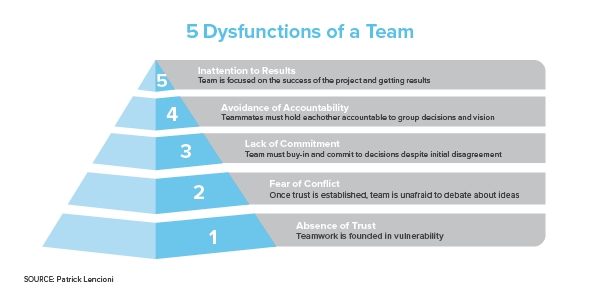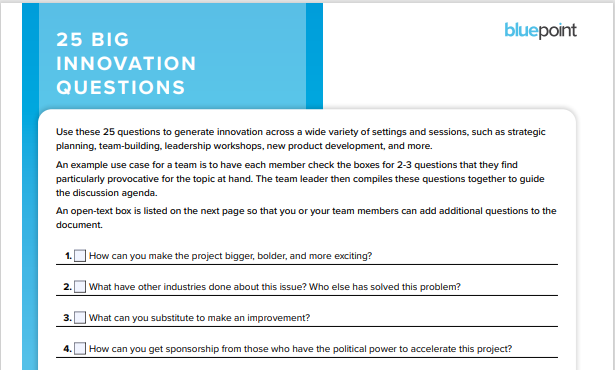Resources
Navigating the Dynamics of Modern Teams: Essential Strategies for Effective Leadership
I’d like to give a shout-out to a colleague who suggested this month’s topic. Her inquiry is a great reminder for me to invite any of our readers to send in your ideas for future columns. It will be my pleasure to address them!
As our business world is becoming increasingly global in scale, and on the heels of the dramatic shift in employee work locations brought about by the pandemic, it’s important to spend some time focused on teams. In reality, nearly all our work is now completed by teams—groups of people assembled to address a specific need. Think about it. When was the last time something significant in your organization was attributed to only one person? That’s just not how work is conducted today. Additionally, the environment in which teams now operate has recently undergone radical changes, including various workplace settings and adjustments. To remain effective in the current landscape, leaders need to fine-tune their antennae around three focus areas that can help them in leading high-performance teams.
Before we look at several models that will help us lead teams, we need to acknowledge the emergence of changes such as the hybrid workplace. Since the COVID-induced adjustments in work settings, employees and employers have made it clear that the hybrid arrangement is here to stay. While providing greater flexibility and lower costs, this dynamic does influence teams. It also adds to the complexity of the formation and management of workgroups that span geographies, time zones, and cultures. Hybrid work has increased significantly, and it now is “the most prevalent work arrangement in most offices”.
A recent Gallup study shares that this preference is consistent across both leader and contributor job roles and is projected by chief human resource officers to be here for the foreseeable future. While their study focuses on the US, I believe the dynamic is universal, and when you add this work structure to the mix of global teams, it requires a heightened amount of collaboration and coordination within the group. So, how must leaders respond, and how can we help them?
Lencioni’s Expertise to Building Powerful Teams
An invaluable tool to build and lead great teams is the well-known model presented by Patrick Lencioni in his groundbreaking book “The Five Dysfunctions of a Team.” Much has been written about the use and value of this work, so I will not belabor the points here. However, consider the model he has constructed for us:

To successfully lead teams, we must ensure that the possible derailers of the group are proactively negated. By removing the most frequent barriers of team performance, we can then expect the group to function more optimally. Leaders must begin at the base of the pyramid (embracing vulnerability as the basis of trust), then work their way up the model to address all five potential dysfunctions.
I have personally experienced the power of this tool and approach to leading teams. In a previous role, our entire leadership team worked through the model while completing exercises that illuminated our strengths as well as areas needing attention. What was compelling to me about these activities was the importance of progression. We learned from our own missteps the value of building our team from the bottom up (starting at 1, ending at 5). It also became apparent that not every step required the same amount of attention and work, and I imagine that will be true for any other team. Some steps can be managed quickly and painlessly while others may require a heavier investment. Nevertheless, Lencioni’s contribution to our field cannot be overlooked when considering how to build and lead great teams.
As a quick aside on the importance of the first level of the model, I offer you a quick message from Simon Sinek that provides an eye-opening perspective on trust. Based on his work with SEAL teams, they found that the trustworthiness of a potential team member weighs heavily in the selection process.
Bluepoint’s Three Dimensions of High-Performance Teams
Regardless of team member locations, uniqueness, or cultures, we know that there are three core qualities of high-performance teams as illustrated in the following graphic.

Let’s take a deeper dive into each of these.
Articulating a Compelling Vision
First, a leader needs to effectively communicate and articulate a purpose for the team, which the members will find both appealing and unifying. Why have they been assembled? What is the calling or mission of the group, and how do the members’ unique talents contribute to the work of the whole? Lastly, how does their byproduct affect something larger than themselves? The leader needs to paint a picture of why the team has been formed and the impact they can have.
Consider this statement:
“Every high-performing team believes it exists for a compelling reason and that the world will be better for what it does. Its purpose is not the task or the work it does, but the benefit it delivers.”
– Linda Hill & Kent Lineback
Fostering Strong Connections
Next, work cannot be effectively pursued unless the people understand each other and revel in the strength of their interpersonal connections. While it is possible to complete tasks without personal investment, we know that the contributions of each professional will be maximized when she/he feels comfortable, safe, and supported within the team. This goes beyond the business skills that each professional possesses. Great teams understand and appreciate the personal motivations and drivers of each of their members so they can be collectively leveraged and embraced during the work. Positive working relationships ignite creativity, problem solving, and growth mindsets that pave the way for team success.
One activity that is helpful here is for team members to assess the strength of their relationships within the group. This simple yet illuminating exercise requires each team member to evaluate each of their intra-team dynamics as shown in the tool below. Making the state of relationships visible is the first step to intentionally improving interpersonal workings.

Creating Accountability Patterns
Finally, great teams hold themselves accountable for the work each member contributes. This fundamental belief and agreement comes from the team itself, but the concept and framework for this accountability must first come from the leader. The notion is quite simple: every team member is personally responsible for an ambitious, measurable outcome, and these targets are visible to all.
Leading teams of any size requires attention to these three dimensions: articulating a vision, supporting great connections, and identifying accountabilities. These can all be mastered through leadership coaching and experiential learning workshops.
Erin Meyer’s Global Distinctions
What we learn from both the Bluepoint and Lencioni teachings applies to all teams regardless of their size, location, and purpose. But given the amount of multicultural and geographical diversity of modern teams, we do need to place heightened focus on the unique challenges they present. Cultural differences are real, belief systems and work approaches vary widely, and leading cross-cultural teams invites special skill and perspective.
To help us here is some wonderful work by Erin Meyer, a professor at one of the world’s leading international business schools, the author of “The Culture Map: Breaking Through the Invisible Boundaries of Global Business,” and a world-renowned speaker. She was also named as one of the 50 most influential business thinkers in the world.
Her work provides valuable insights into how diverse cultures operate in the business context, as well as how critical it is for those intricacies and nuances to be recognized and incorporated into the work setting. For example, look at the chart below:

Here, Ms. Meyer identifies eight competencies or behaviors, and maps continuums for each competency. For example, one extreme form of Disagreeing is “Confrontational,” and at the other end of the spectrum is “Avoidant.” Where any particular individual falls across the continuum can be highly influenced by their cultural norms, which needs to be taken into consideration as teammates are brought together. Let’s consider the implications on the formation and management of global teams. If one member is comfortable being very direct when debating alternatives, while someone else is potentially offended by such an approach, imagine how the team will perform? While both parties have the best intentions of contributing, their natural behaviors are at odds, and this will minimize the team’s effectiveness.
Such potential intra-team conflicts need to be proactively addressed and placed at the forefront of team creation. Codes of conduct, rules of engagement and decision making, and other fundamental ground rules must be established up front and adhered to throughout the team’s process. And it all begins with understanding each team member and the uniqueness their background brings to the group. To help, you may want to learn more about the tools that Ms. Meyer has created for us.
A Final Thought
Most work today is done by teams, and we must replace forming and managing them out of convenience with more conscious thought on who the members should be and how to establish an effective chemistry among the group. Additionally, as the group is established, leaders need to embrace a root connection culture within the team based on four principles:
- Honor each team member
- Facilitate the disclosure of each member’s work preferences
- Learn about how each professional can best contribute
- Serve the individual as well as the team
Until next time, good leading!
About The Author

Neil Bryant
Neil is committed to the development of leaders… executive, mid-level, and emerging… and supporting all professionals who seek to elevate their performance and enjoyment of work. Following a meaningful career in sales, marketing, consulting, and business management in large corporations, he turned his focus to the leadership development and Executive Coaching fields. His passion lies in enabling leaders, and all committed professionals, to become the most effective and satisfying version of themselves, particularly in the context of their work environment.
Related Resources

The Value of Coaching
coaching

25 Big Innovation Questions
leading-teams

5-Step Framework for Effective Delegation
leading-teams
Subscribe to newsletter
Subscribe to our newsletter today and receive innovative, insightful and thought provoking resources (videos, webinars and articles) all effective tools for developing leadership talent.
This is a member-only resource. Contact sales at info@bluepointleadership.com for information on Corporate Membership or learn more here: Learn More
This is a member-only resource. Contact sales at info@bluepointleadership.com for information on Corporate Membership or learn more here: Learn More


